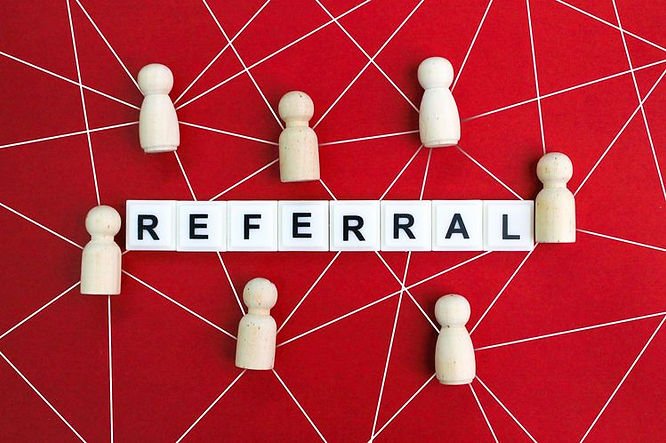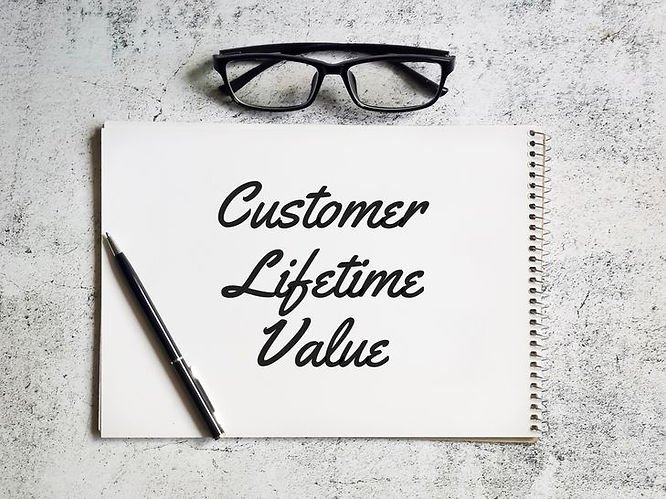In today’s highly competitive e-commerce landscape, businesses are continuously seeking ways to stand out and maintain a loyal customer base. One effective strategy for achieving this is by offering a loyalty program on your e-commerce site. A well-designed loyalty program can provide numerous benefits, including increased customer retention, sales growth, and improved brand reputation, which ultimately contribute to the long-term success of your business.
Offering a loyalty program on your e-commerce site can bring various benefits to both your customers and your business. These benefits can drive customer retention, increase sales, and boost brand reputation. Here are some of the key advantages of offering a loyalty program on your e-commerce site.
10 Benefits Of Offering A Loyalty Program On Your E-Commerce Site
- Customer Retention: Loyalty programs encourage customers to return to your site for future purchases by offering rewards and incentives. This leads to higher retention rates and strengthens long-term customer relationships.
- Increased Sales: Rewarding customers with points or discounts can encourage them to spend more on your site, resulting in increased sales and a higher average order value.
- Customer Data Collection: Loyalty programs provide valuable insights into customer behavior and preferences. This data can be used to tailor marketing efforts and improve the shopping experience, ultimately leading to increased sales and customer satisfaction.
- Enhanced Brand Loyalty: By offering exclusive rewards and personalized offers, you can create a sense of exclusivity and foster a strong emotional connection between customers and your brand.
- Word-of-Mouth Marketing: Satisfied customers who feel valued are more likely to recommend your e-commerce site to friends and family. This word-of-mouth marketing can help attract new customers and increase brand awareness.
- Competitive Advantage: A well-designed loyalty program can help your e-commerce site stand out from the competition by offering unique benefits and rewards to your customers.
- Reduced Acquisition Costs: By focusing on retaining existing customers, you can reduce the costs associated with acquiring new customers, such as advertising and promotional expenses.
- Improved Customer Feedback: Loyal customers are more likely to provide valuable feedback on your products and services, which can help you make improvements and adjustments to better meet their needs.
- Increased Customer Lifetime Value (CLV): Customers who participate in a loyalty program tend to have a higher lifetime value, as they are more likely to make repeat purchases and spend more on your site over time.
- Higher Profit Margins: By targeting and rewarding your most loyal customers, you can generate higher profit margins. These customers are often less price-sensitive and more likely to make additional purchases.
By offering a loyalty program on your e-commerce site, you can foster long-term customer relationships, drive sales, and gain valuable insights into customer behavior, ultimately improving the overall success of your business.
Customer Retention

Customer retention is crucial for any e-commerce business, as retaining existing customers is generally more cost-effective than acquiring new ones. By offering loyalty programs, e-commerce sites can increase customer retention rates and foster long-term relationships through the following mechanisms:
Personalization
Loyalty programs often involve the collection of customer data, which enables businesses to offer personalized rewards, recommendations, and marketing communications. This personal touch can create a deeper connection between the customer and the brand, making them feel valued and understood.
Emotional Connection
When customers feel that a brand values their business and loyalty, they are more likely to develop an emotional connection to that brand. This emotional connection can lead to increased trust and commitment, making customers less likely to switch to a competitor.
Gamification
Many loyalty programs incorporate gamification elements, such as points, levels, or badges, to make the shopping experience more engaging and fun. This can create a sense of achievement for customers, motivating them to continue shopping on the site to unlock more rewards.
Exclusivity
Loyalty programs often provide members with exclusive offers, early access to sales, or priority customer support. These exclusive benefits can make customers feel special and appreciated, further enhancing their loyalty to the brand.
Social Proof
Customers who participate in a loyalty program may be more likely to share their positive experiences with friends and family or post reviews online. This social proof can help reinforce the customer’s commitment to the brand and encourage others to join the loyalty program as well.
Financial Incentives
By offering rewards such as discounts, cashback, or free shipping, loyalty programs provide tangible financial incentives for customers to continue shopping on the site. These incentives can help offset any perceived drawbacks, such as price differences or shipping costs, compared to shopping with competitors.
Habit Formation
The continuous cycle of earning and redeeming rewards can help establish a habit of shopping with a particular brand. As customers become more accustomed to the shopping experience and rewards, they may be less likely to consider alternatives.
By implementing a loyalty program that addresses these key aspects, e-commerce businesses can encourage customers to return to their site for future purchases, leading to higher retention rates and stronger long-term customer relationships. This, in turn, can positively impact a company’s bottom line by reducing customer acquisition costs, increasing customer lifetime value, and ultimately driving revenue growth.
Increased Sales

Increased sales are a primary goal for e-commerce businesses, and loyalty programs can play a significant role in achieving this objective. By offering rewards or discounts to customers, loyalty programs can encourage them to spend more on your site, leading to higher sales and average order values. Here’s an in-depth look at how this works:
Incentivized Spending
Loyalty programs often involve earning points or other rewards based on the amount spent by the customer. This incentivizes customers to spend more to earn more points or reach higher reward tiers. By offering attractive rewards, customers may be inclined to add more items to their cart or choose higher-priced products.
Tiered Programs
Many loyalty programs use a tiered structure, where customers achieve higher status levels as they accumulate points or make more purchases. This encourages customers to spend more to reach higher tiers, which often come with better rewards, discounts, or exclusive perks.
Limited-Time Offers
Loyalty programs can also provide members with limited-time offers, such as double points or flash sales. These time-sensitive incentives create a sense of urgency, encouraging customers to make purchases sooner and potentially increasing their spending.
Upselling And Cross-Selling
With the customer data collected through loyalty programs, businesses can create personalized upselling and cross-selling opportunities. By offering targeted product recommendations or incentives, customers may be more likely to purchase additional items or higher-value products, ultimately increasing sales.
Reward Redemption
When customers redeem rewards, such as discounts or free items, they often end up spending more than the value of the reward. This can lead to higher average order values as customers take advantage of the perceived savings and add extra items to their carts.
Increased Frequency
Loyalty programs can motivate customers to shop more frequently, as they aim to earn more rewards or maintain their status within the program. This increase in shopping frequency can lead to higher overall sales for the business.
Enhanced Customer Experience
By providing a seamless and enjoyable shopping experience through a well-designed loyalty program, customers are likely to feel more satisfied and make more purchases. This positive experience can lead to increased sales and help build long-term customer relationships.
In summary, loyalty programs can drive increased sales by incentivizing customers to spend more and shop more frequently. By offering appealing rewards, targeted promotions, and a personalized shopping experience, e-commerce businesses can encourage customers to make larger and more frequent purchases, ultimately leading to higher sales and average order values.
Customer Data Collection

Customer data collection is an essential aspect of loyalty programs that can offer substantial benefits to e-commerce businesses. By gathering and analyzing information about customers’ shopping habits, preferences, and demographics, businesses can gain valuable insights to inform marketing strategies and enhance the overall customer experience. This, in turn, can result in increased sales and customer satisfaction. Here’s a deeper look at how customer data collection through loyalty programs can be advantageous:
Personalized Marketing
By understanding customer’s preferences and purchase histories, businesses can create targeted marketing campaigns, such as personalized emails, promotions, or product recommendations. These tailored marketing efforts can be more effective at driving sales than generic mass marketing.
Segmentation
Customer data can be used to segment customers into different groups based on their behaviors or preferences. This segmentation can help businesses identify high-value customers, tailor promotions and communications to specific groups, and develop strategies to convert one-time buyers into loyal customers.
Improved Product Offerings
Analyzing customer data can reveal trends and preferences, allowing businesses to adjust their product offerings to better cater to their customers’ needs. This can lead to higher customer satisfaction, increased sales, and a more competitive position in the market.
Enhanced User Experience
By examining customer behavior data, businesses can identify areas of their website or shopping experience that need improvement. Adjustments to site design, navigation, or checkout processes can lead to a more seamless and enjoyable experience, which in turn can boost sales and customer satisfaction.
Predictive Analytics
Customer data can be used to create predictive models to forecast future customer behavior, preferences, or spending habits. These insights can help businesses anticipate customers’ needs and preferences, allowing them to stay ahead of trends and competitors.
Better Customer Support
By having access to customer data and purchase histories, customer support teams can provide more personalized and efficient assistance. This can improve customer satisfaction and help resolve issues more effectively, ultimately leading to higher customer retention rates.
A/B Testing
Customer data can be leveraged to perform A/B testing of various marketing strategies, website designs, or product offerings. This testing can help businesses optimize their strategies and make data-driven decisions to improve performance and customer satisfaction.
In conclusion, the customer data collected through loyalty programs offer valuable insights that can be utilized to enhance marketing efforts, product offerings, and overall customer experience. By leveraging this data effectively, e-commerce businesses can increase sales, improve customer satisfaction, and build lasting relationships with their customers.
Enhanced Brand Loyalty

Enhanced brand loyalty is an essential goal for e-commerce businesses, as loyal customers tend to make repeat purchases and contribute more to a company’s long-term success. By offering exclusive rewards and personalized offers through loyalty programs, businesses can create a sense of exclusivity and foster a strong emotional connection between customers and their brands. Here’s a deeper look at how this can be achieved:
Emotional Connection
Providing personalized offers and rewards demonstrates that a business values its customers and understands their needs. This can lead to increased trust, appreciation, and a stronger emotional connection with the brand, ultimately resulting in higher brand loyalty.
Exclusivity
Offering exclusive rewards, such as members-only sales, special discounts, or priority access to new products, can make customers feel special and valued. This sense of exclusivity can help differentiate a brand from its competitors and foster customer loyalty.
Recognition And Status
Tiered loyalty programs that reward customers based on their spending or engagement levels can provide customers with a sense of achievement and recognition. Higher tiers may offer more exclusive rewards or benefits, further encouraging customers to remain loyal to the brand to maintain their status.
Personalized Communication
Leveraging customer data to deliver personalized marketing messages or product recommendations can help customers feel more connected to the brand. This tailored communication can strengthen the emotional bond between customers and the brand, enhancing brand loyalty.
Surprise And Delight
Occasionally surprising customers with unexpected rewards or personalized offers can create a memorable and positive experience. These delightful moments can foster goodwill and strengthen the emotional connection between customers and the brand.
Community Building
Encouraging interaction among loyalty program members, such as through social media groups or forums, can help create a sense of community around the brand. This shared connection can further reinforce customers’ emotional attachment to the brand and their loyalty.
Consistent Value
By consistently offering valuable rewards and benefits through the loyalty program, businesses can demonstrate their commitment to their customers. This consistency can help build trust, reliability, and a long-term connection with the brand.
By incorporating these strategies into a loyalty program, e-commerce businesses can create a sense of exclusivity and foster a strong emotional connection with their customers. This enhanced brand loyalty can lead to increased customer retention, higher lifetime value, and long-term success for the business.
Word-of-Mouth Marketing

Word-of-mouth marketing is a powerful and cost-effective way to attract new customers and increase brand awareness for your e-commerce site. When satisfied customers feel valued, they are more likely to share their positive experiences with friends and family, providing social proof and credibility for your brand. Here’s a closer look at the benefits of word-of-mouth marketing and how it can be influenced by loyalty programs:
Trust And Credibility
People tend to trust recommendations from friends and family more than traditional advertising. Word-of-mouth marketing can help establish trust and credibility for your brand, making it more likely that new customers will give your e-commerce site a try.
Social Proof
When prospective customers see others sharing positive experiences or recommending a brand, it provides social proof that the brand is reliable and trustworthy. This can help reduce any perceived risk associated with trying a new product or service, leading to increased interest and sales.
Cost-Effective Marketing
Word-of-mouth marketing is typically more cost effective than traditional advertising methods, as satisfied customers become brand advocates and share their experiences for free. This can help reduce marketing expenses while still attracting new customers.
Enhanced Customer Loyalty
Customers who recommend a brand to others are more likely to feel a sense of ownership and pride in their association with that brand. This can lead to increased loyalty and a stronger emotional connection to the brand.
Viral Potential
In some cases, word-of-mouth marketing can lead to a product or brand going viral, resulting in rapid growth and increased brand awareness. This can help boost sales and propel a brand to new levels of success.
Diverse Customer Base
As customers share their experiences with a wider network of friends and family, your brand can reach new audiences, potentially attracting a more diverse customer base.
Loyalty programs can play a significant role in encouraging word-of-mouth marketing by offering exclusive rewards, personalized offers, and excellent customer experiences. These programs make customers feel valued and appreciated, increasing their satisfaction and the likelihood that they will share their experiences with others. By fostering strong customer relationships through loyalty programs, e-commerce businesses can leverage the power of word-of-mouth marketing to attract new customers, increase brand awareness, and drive long-term growth.
Competitive Advantage

A competitive advantage is crucial for e-commerce businesses, as it allows them to differentiate themselves from competitors and attract more customers. A well-designed loyalty program can help your e-commerce site stand out by offering unique benefits and rewards to your customers. Here’s how a loyalty program can contribute to a competitive advantage:
Differentiation
A unique and appealing loyalty program can set your e-commerce site apart from competitors by offering exclusive rewards, discounts, or personalized experiences. This differentiation can help attract customers who are looking for added value beyond just the products or services offered.
Customer Retention
A loyalty program can encourage customers to continue shopping on your site instead of exploring alternatives, leading to higher customer retention rates. Retaining customers is typically more cost-effective than acquiring new ones, which can be a significant competitive advantage.
Enhanced Customer Experience
A well-designed loyalty program can improve the overall customer experience by providing personalized offers, streamlined processes, and responsive customer support. A superior customer experience can make your brand more attractive to customers and help you stand out from the competition.
Brand Loyalty
Loyalty programs can foster stronger emotional connections between customers and your brand. This enhanced brand loyalty can make it more difficult for competitors to lure away your customers, giving you a competitive edge.
Customer Insights
The data collected through loyalty programs can provide valuable insights into customer behavior and preferences. This information can be used to make data-driven decisions, such as optimizing marketing strategies, product offerings, or website design, giving your e-commerce site a competitive advantage.
Network Effect
As more customers join your loyalty program and share their experiences with others, your brand can benefit from increased word-of-mouth marketing and a larger, more loyal customer base. This network effect can help reinforce your competitive advantage and contribute to long-term success.
Innovation
A successful loyalty program can incentivize businesses to continually innovate and improve their offerings to maintain customer interest and satisfaction. This constant innovation can help your e-commerce site stay ahead of the competition and adapt to changing market trends.
In summary, a well-designed loyalty program can give your e-commerce site a competitive advantage by differentiating your brand, enhancing customer experience, fostering brand loyalty, and providing valuable customer insights. By offering unique benefits and rewards, your loyalty program can help your e-commerce site stand out from the competition and attract more loyal customers, ultimately contributing to the long-term success of your business.
Reduced Acquisition Costs

Reduced acquisition costs are an important benefit of focusing on customer retention through loyalty programs. Acquiring new customers typically requires significant investments in advertising, promotions, and other marketing efforts. By prioritizing the retention of existing customers, businesses can reduce these costs and allocate resources more efficiently. Here’s how loyalty programs can help reduce customer acquisition costs:
Improved Retention Rates
A well-designed loyalty program can increase customer retention rates by offering valuable rewards and incentives that encourage repeat purchases. Higher retention rates can reduce the need to constantly invest in acquiring new customers, ultimately lowering acquisition costs.
Word-of-Mouth Marketing
As mentioned earlier, satisfied customers who feel valued are more likely to recommend your e-commerce site to friends and family. This word-of-mouth marketing can help attract new customers at a much lower cost than traditional advertising methods.
Leveraging Customer Data
The data collected through loyalty programs can be used to create personalized marketing campaigns that target existing customers, resulting in more effective and efficient marketing efforts. By focusing on existing customers, businesses can reduce their reliance on expensive marketing strategies aimed at attracting new customers.
Higher Customer Lifetime Value (CLV)
By retaining customers and encouraging repeat purchases, businesses can increase the lifetime value of each customer. A higher CLV can help offset the costs associated with acquiring new customers, as the overall revenue generated from each customer is increased.
Lower Churn Rates
Loyalty programs can help reduce customer churn rates by fostering stronger relationships and providing incentives for customers to remain loyal. Lower churn rates can reduce the pressure to constantly attract new customers, thus lowering acquisition costs.
Cross-selling and Upselling Opportunities
Loyalty programs enable businesses to better understand their customers’ preferences and needs, allowing for more targeted cross-selling and upselling opportunities. By increasing the value of each customer interaction, businesses can generate more revenue from existing customers and reduce their reliance on acquiring new ones.
In conclusion, by focusing on retaining existing customers through loyalty programs, e-commerce businesses can reduce acquisition costs associated with advertising and promotional expenses. This approach can lead to more efficient resource allocation, improved customer relationships, and ultimately, a more sustainable and profitable business model.
Improved Customer Feedback

Improved customer feedback is an essential benefit of having loyal customers who participate in your e-commerce site’s loyalty program. These customers are more likely to share their opinions and provide valuable insights on your products and services, as they have a vested interest in your brand. This feedback can help you make improvements and adjustments to better meet customer needs and expectations. Here’s how loyalty programs can lead to improved customer feedback:
Open Communication Channels
Loyalty programs can provide a platform for customers to share their thoughts, concerns, and suggestions. By facilitating open communication channels, such as surveys, feedback forms, or social media groups, businesses can actively collect valuable feedback from their loyal customers.
Higher Engagement
Loyal customers are more likely to be engaged with your brand and willing to provide feedback. They have developed a relationship with your business and often feel more comfortable sharing their opinions and experiences, knowing that their feedback can lead to improvements and a better shopping experience.
Constructive Criticism
Loyal customers who feel valued and appreciated are more likely to provide constructive criticism, as they trust that their feedback will be taken seriously and lead to positive changes. This type of feedback can be invaluable for businesses looking to improve their products, services, or overall customer experience.
Product Reviews and Testimonials
Loyal customers are often more willing to leave detailed product reviews or provide testimonials, which can help other potential customers make informed decisions. These reviews can also provide businesses with insights into what customers like or dislike about their products, allowing them to make necessary adjustments.
Early Adopters
Loyal customers may be more inclined to try new products or services, providing early feedback that can help businesses refine their offerings before a broader launch. This early feedback can be crucial for identifying potential issues or areas for improvement.
Insights into Customer Preferences
By analyzing feedback from loyal customers, businesses can gain insights into customer preferences, trends, and potential areas of growth. This information can be used to tailor product offerings, marketing strategies, and overall customer experience to better meet customer needs and expectations.
In summary, loyal customers who participate in loyalty programs are more likely to provide valuable feedback on products and services, allowing businesses to make improvements and adjustments to better meet their needs. By fostering strong relationships with loyal customers, businesses can gain valuable insights that contribute to the ongoing success and growth of their e-commerce site.
Increased Customer Lifetime Value (CLV)

Increased Customer Lifetime Value (CLV) is a significant benefit of having customers participate in a loyalty program on your e-commerce site. CLV is a measurement of the net profit a business can expect to earn from a customer throughout its relationship. Customers who engage in loyalty programs tend to have a higher lifetime value because they are more likely to make repeat purchases and spend more on your site over time. Here’s how loyalty programs contribute to increased CLV:
Repeat Purchases
Loyalty programs incentivize customers to continue shopping on your site by offering rewards, discounts, and other benefits. These incentives encourage repeat purchases, increasing the overall revenue generated by each customer.
Higher Average Order Value (AOV)
Customers who participate in loyalty programs often have a higher AOV, as they may be more inclined to take advantage of exclusive offers or redeem rewards points. This increased spending can contribute to a higher CLV.
Enhanced Customer Retention
Loyalty programs help improve customer retention by fostering long-term relationships and strengthening emotional connections with your brand. Higher retention rates lead to longer customer lifetimes, which in turn results in a higher CLV.
Reduced Churn Rates
By providing incentives and rewards for continued engagement, loyalty programs can help reduce customer churn rates. Lower churn rates mean that customers remain active for longer periods, increasing their overall value to the business.
Upselling and Cross-selling Opportunities
As customers engage with loyalty programs, businesses can better understand their preferences and needs. This knowledge enables targeted upselling and cross-selling opportunities, which can increase the value of each customer interaction and contribute to a higher CLV.
Positive Word-of-Mouth
Loyal customers are more likely to recommend your brand to friends and family, attracting new customers at a lower acquisition cost. These referrals can help grow your customer base and increase overall CLV without significant marketing expenses.
Continuous Improvement
The feedback and insights gathered from loyal customers can help businesses make improvements to their products, services, and customer experience. These improvements can lead to increased customer satisfaction, repeat purchases, and a higher CLV.
In conclusion, loyalty programs play a critical role in increasing Customer Lifetime Value (CLV) by encouraging repeat purchases, improving customer retention, and fostering long-term relationships. By implementing a well-designed loyalty program, e-commerce businesses can maximize the value of each customer and drive long-term growth and profitability.
Higher Profit Margins

Higher profit margins are another benefit that can be achieved by targeting and rewarding your most loyal customers through loyalty programs. Loyal customers are often less price-sensitive and more inclined to make additional purchases, resulting in increased revenue and profitability for your e-commerce business. Here’s how loyalty programs can lead to higher profit margins:
Reduced Price Sensitivity
Loyal customers who are emotionally connected to your brand and feel valued may be less sensitive to price changes or fluctuations. They are more likely to continue purchasing from your site, even if competitors offer lower prices, due to their loyalty and trust in your brand.
Increased Spending
Customers who participate in loyalty programs tend to spend more on each purchase, as they may be motivated to take advantage of rewards or exclusive offers. This increased spending can contribute to higher profit margins, as the cost of providing rewards is often less than the additional revenue generated.
Lower Acquisition Costs
As mentioned earlier, focusing on retaining existing customers through loyalty programs can reduce the costs associated with acquiring new customers. By lowering acquisition costs, businesses can allocate resources more efficiently and achieve higher profit margins.
Higher Lifetime Value
Loyal customers who participate in loyalty programs generally have a higher Customer Lifetime Value (CLV), as they make repeat purchases and spend more over time. A higher CLV can help offset marketing and operational costs, leading to increased profitability.
Premium Offerings
Loyal customers may be more willing to purchase premium products or services, as they trust your brand and perceive a higher value in your offerings. This can result in higher profit margins, as premium products often have higher markups.
Reduced Promotional Costs
By targeting and rewarding loyal customers, businesses can reduce the need for constant promotions and discounts to attract new customers. This can lead to cost savings and higher profit margins, as loyal customers are more likely to purchase at regular prices.
Economies of Scale
As your loyal customer base grows, you may be able to take advantage of economies of scale in areas such as inventory management, shipping, and production. These efficiencies can result in cost savings and contribute to higher profit margins.
Loyalty programs can help e-commerce businesses generate higher profit margins by targeting and rewarding their most loyal customers. These customers are often less price-sensitive, more likely to make additional purchases and contribute to higher revenues. By focusing on fostering long-term relationships with loyal customers, businesses can optimize their profitability and ensure sustainable growth.
Implementing a loyalty program on your e-commerce site can significantly enhance customer loyalty, satisfaction, and engagement. By offering exclusive rewards and incentives, you can create a unique shopping experience that fosters long-term relationships with your customers, ultimately leading to increased sales, brand awareness, and overall business success. As the e-commerce industry continues to evolve, loyalty programs will remain a valuable tool for businesses aiming to maintain a competitive edge and foster customer loyalty. Join our coaching program to learn more.

